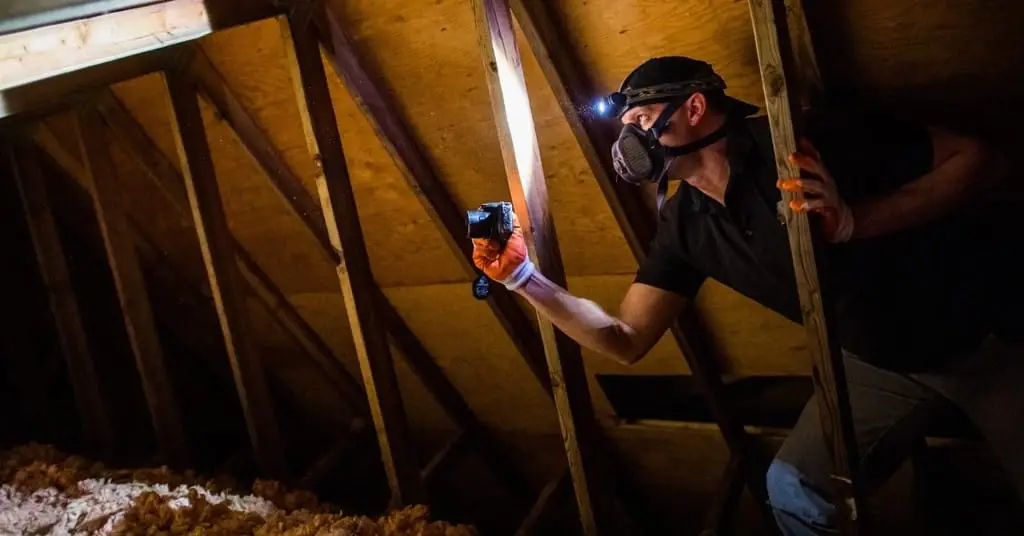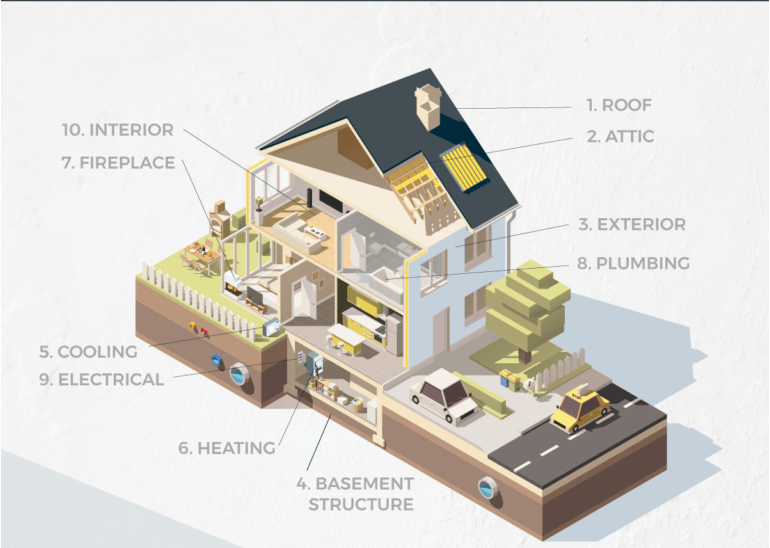Count On Resident Professionals for Top Quality Home Inspection Lockhart Solutions
Count On Resident Professionals for Top Quality Home Inspection Lockhart Solutions
Blog Article
What to Anticipate From Home Examination: an In-depth Checklist and Its Value
Comprehending what to anticipate from a home inspection is vital for both customers and vendors in the real estate market. A complete examination offers an in-depth list that analyzes key components such as structural stability, significant systems, and total residential or commercial property problem.

Value of Home Inspections
The significance of home assessments can not be overemphasized, as they serve as a vital guard for both buyers and sellers in the genuine estate market. For customers, a home inspection offers a neutral evaluation of the home's problem, disclosing possible issues that may not show up during a laid-back walkthrough. This procedure aids buyers make notified decisions and work out repairs or price changes before closing, ultimately safeguarding their investment.
Alternatively, vendors can gain from home evaluations by dealing with problems proactively before noting their building. This can boost the home's bankability and possibly quicken the sales process. A pre-listing evaluation can also instill confidence in prospective buyers, as it demonstrates openness and a dedication to keeping the building.
In addition, home examinations add to the general safety and habitability of houses. By recognizing architectural, electrical, or plumbing concerns, they make sure that homes conform with safety criteria and guidelines. This not only protects the occupants but additionally promotes the integrity of the realty market. In summary, home inspections are an essential component of property purchases, supplying vital understandings that foster trust fund and transparency amongst all celebrations entailed.
Key Parts of the Checklist
An extensive home examination checklist incorporates several crucial elements that guarantee a detailed assessment of a building's condition. The first part is the structural integrity, which consists of the exam of the foundation, walls, and roofing system for any indications of damages or wear and tear. Next off, the checklist addresses major systems such as plumbing, electrical, and cooling and heating, evaluating their functionality and safety and security.
Another crucial area is the outside of the home, which includes checking house siding, home windows, doors, and roof covering materials for wear and potential leaks. The checklist also covers interior elements, including flooring, walls, ceilings, and insulation, to identify any issues that may impact comfort or safety.
Furthermore, the list typically includes an assessment of home appliances, ensuring they are in good working order. Lastly, the inspection should assess exterior rooms, including driveways, decks, and patios, to evaluate their condition and safety and security. Each of these parts plays a crucial role in providing a thorough understanding of the property, inevitably helping prospective customers in making notified choices regarding their financial investment.
Common Concerns Discovered
Commonly, home examinations expose a selection of problems that can vary from minor repairs to substantial safety problems. One common concern is the visibility of water damage, often originating from leaky roofings, pipes failures, or inadequate water drainage systems. Such damage can bring about mold and mildew development, which positions wellness threats and might need extensive remediation.

One more usual finding entails electric systems. Outdated electrical wiring, overloaded circuits, or improper grounding can create fire dangers and demand immediate attention. Furthermore, problems with cooling and heating systems, such as inadequate maintenance or age-related ineffectiveness, can affect comfort and energy prices.
Architectural issues like split structures or endangered framing are likewise often noted. These concerns can lead to major repercussions otherwise resolved without delay. Moreover, parasites such as termites or rats might be discovered, suggesting the capacity for considerable building damages.
Lastly, the condition of windows and doors typically comes under examination. Poor seals can lead to energy loss, while harmed frameworks or glass can impact safety and looks. Determining these typical issues during a home inspection is crucial for educated decision-making and making certain the safety and security and durability of the home.
Getting Ready For the Evaluation
Preparation is essential for an effective home examination, making sure visit homepage that both purchasers and sellers can navigate the procedure with self-confidence. Begin by scheduling the inspection at an equally convenient time, enabling ample availability to the residential or commercial property. For sellers, it is advisable to declutter and clean the home extensively, as a tidy environment can favorably influence the assessor's evaluation.

For purchasers, preparing involves assembling a checklist of specific issues or areas of rate of interest to review with the assessor. By taking these preparatory steps, both parties can set the stage for a reliable and detailed home examination experience.
Post-Inspection Activities
After the examination is full, both purchasers and vendors need to take certain activities to attend to the searchings for. For customers, the primary step is to carefully review the evaluation record, keeping in mind any type of significant problems that may affect their decision. This document offers as a critical device for arrangement. Purchasers may request repairs or credit scores from the vendor based on significant issues, such as outdated systems or architectural troubles.
Sellers, on the various other hand, need to examine the findings to establish which problems they can resolve prior to settling the sale. Fixing small repair work can boost the residential property's allure and potentially cause a greater list price. Sellers may select to disclose issues to prospective customers, promoting openness and trust.
In instances where significant repairs are required, both events may gain from acquiring estimates or quotes from certified specialists. company website This enables informed discussions pertaining to repair service obligations. It is vital for both vendors and customers to maintain open lines of communication throughout this procedure to ensure a smooth deal. By taking these post-inspection activities, both parties can navigate the negotiation landscape with confidence and clearness.
Verdict
Home examinations serve as a vital part in the actual estate transaction procedure, making sure an extensive assessment of a property's problem. Eventually, the value of home assessments can not be overstated, as they promote notified decision-making and add to a smoother real estate experience.
For customers, a home inspection gives a neutral analysis of the residential index or commercial property's problem, revealing potential problems that might not be noticeable during a laid-back walkthrough.On the other hand, vendors can profit from home inspections by addressing concerns proactively before noting their property (Home Inspection Lockhart).Generally, home inspections reveal a range of problems that can vary from small fixings to significant safety worries. Identifying these common problems throughout a home evaluation is important for notified decision-making and making certain the security and durability of the building
Preparation is necessary for an effective home examination, making sure that both sellers and purchasers can navigate the process with confidence.
Report this page